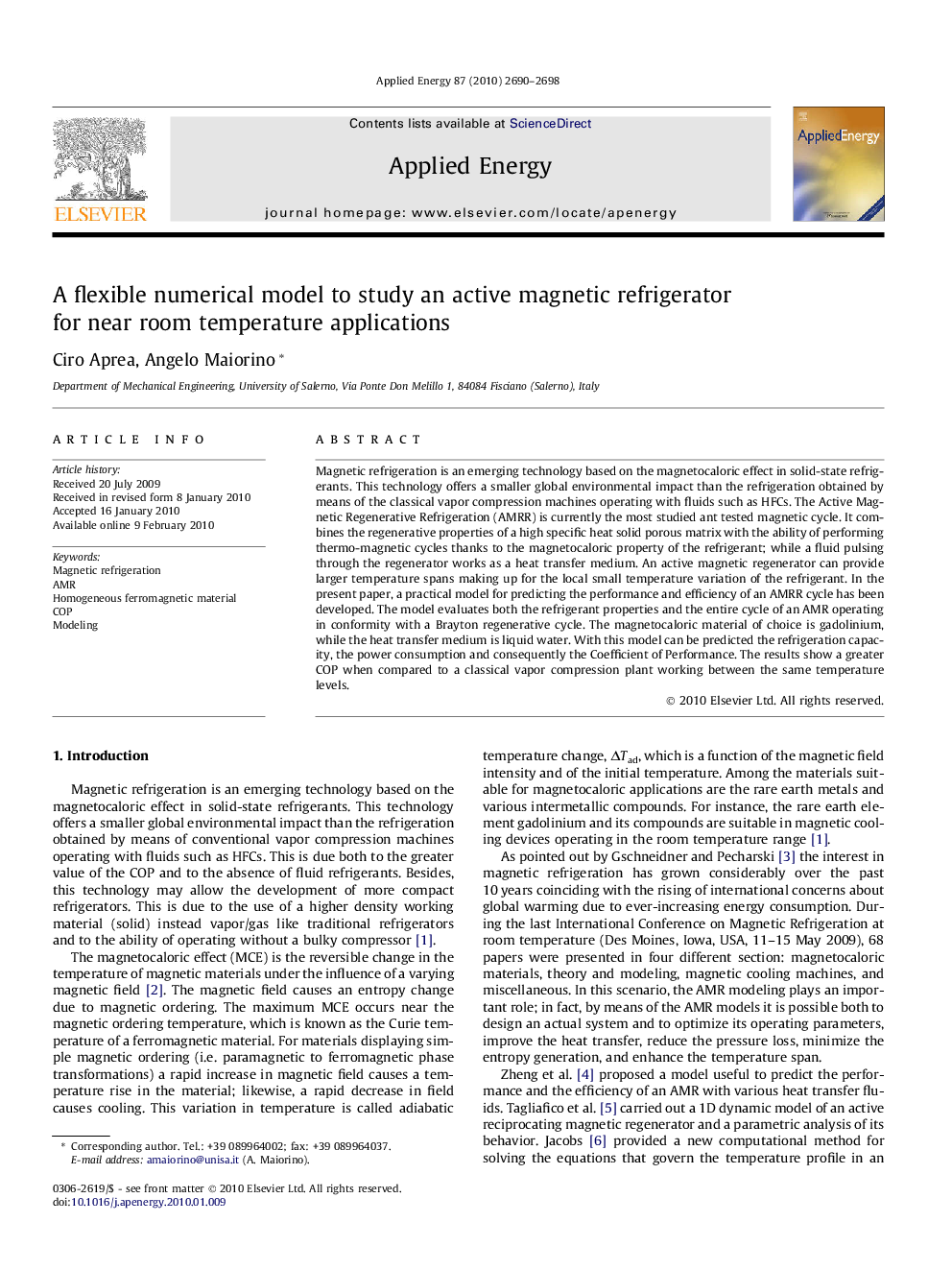| Article ID | Journal | Published Year | Pages | File Type |
|---|---|---|---|---|
| 244353 | Applied Energy | 2010 | 9 Pages |
Magnetic refrigeration is an emerging technology based on the magnetocaloric effect in solid-state refrigerants. This technology offers a smaller global environmental impact than the refrigeration obtained by means of the classical vapor compression machines operating with fluids such as HFCs. The Active Magnetic Regenerative Refrigeration (AMRR) is currently the most studied ant tested magnetic cycle. It combines the regenerative properties of a high specific heat solid porous matrix with the ability of performing thermo-magnetic cycles thanks to the magnetocaloric property of the refrigerant; while a fluid pulsing through the regenerator works as a heat transfer medium. An active magnetic regenerator can provide larger temperature spans making up for the local small temperature variation of the refrigerant. In the present paper, a practical model for predicting the performance and efficiency of an AMRR cycle has been developed. The model evaluates both the refrigerant properties and the entire cycle of an AMR operating in conformity with a Brayton regenerative cycle. The magnetocaloric material of choice is gadolinium, while the heat transfer medium is liquid water. With this model can be predicted the refrigeration capacity, the power consumption and consequently the Coefficient of Performance. The results show a greater COP when compared to a classical vapor compression plant working between the same temperature levels.
